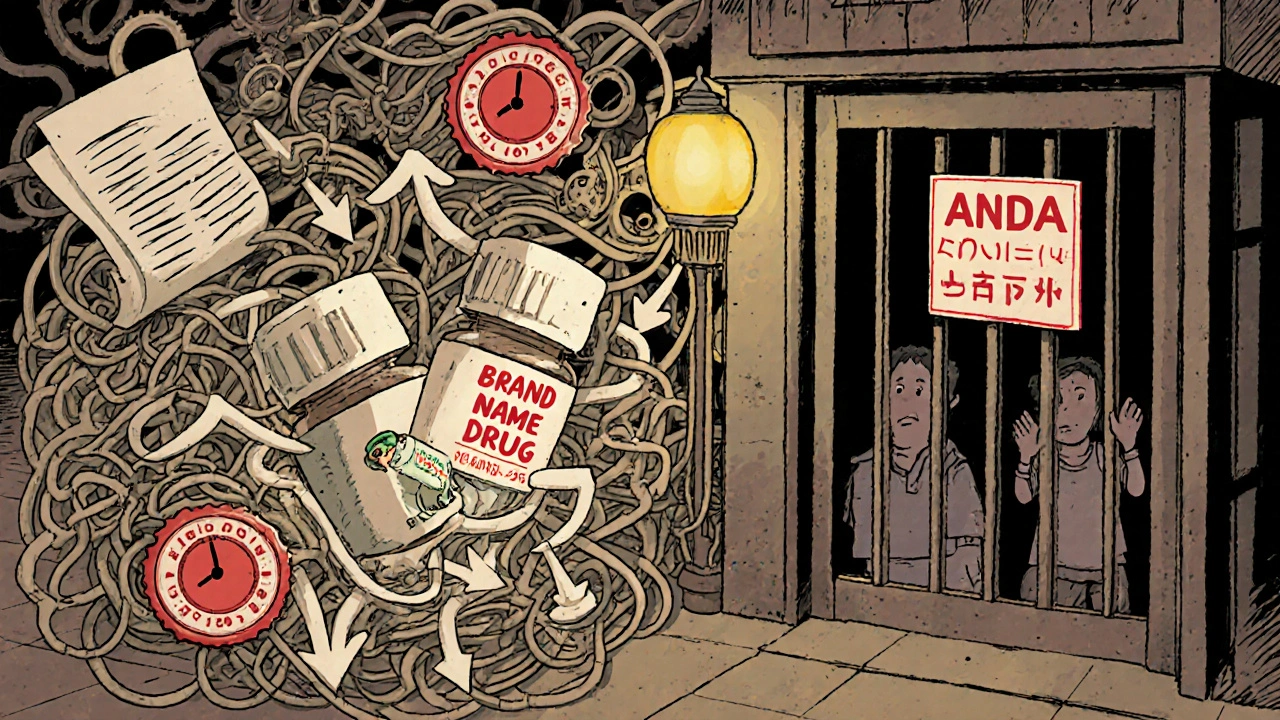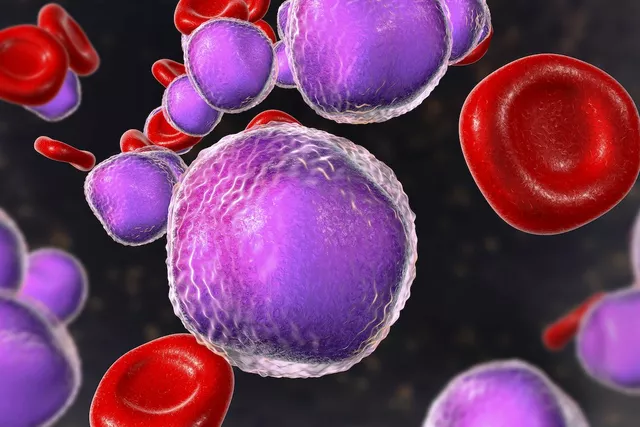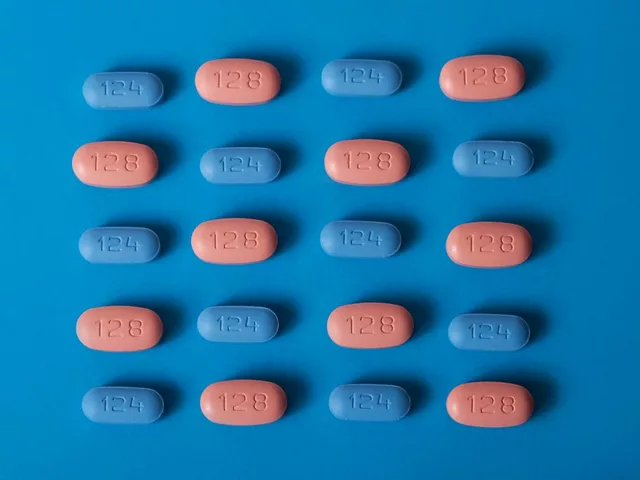When a brand-name drug’s patent runs out, you’d think generic versions would flood the market right away. But in reality, it often takes years after patent expiration before you can buy a cheaper version at your pharmacy. Why? It’s not just about the clock ticking down. There’s a whole system of legal, regulatory, and business moves that slow things down - sometimes deliberately.
Patents Aren’t the Only Barrier
Most people assume that once a drug’s 20-year patent expires, generics can jump in. But that’s not how it works. The real clock starts ticking from when the drug was first filed - not when it hit the market. Because drug development takes 8 to 10 years just to get FDA approval, most brand-name drugs only have 7 to 12 years of actual market exclusivity before patents expire. Even then, other protections kick in. The FDA gives extra exclusivity periods on top of patents. If a drug is a new chemical entity, it gets 5 years of market protection. If the maker did new clinical studies - say, to test it for a different condition - that adds 3 more years. Orphan drugs, used for rare diseases, get 7 years. And if the company tested the drug on kids, they get an extra 6 months. These layers stack up. A single drug can have multiple overlapping protections, making it hard for generics to even start the process.The ANDA Process: Simpler, But Still Slow
Generic manufacturers don’t need to redo clinical trials. They just need to prove their version works the same way as the brand-name drug - called bioequivalence. They file an Abbreviated New Drug Application, or ANDA. Sounds simple, right? But the FDA doesn’t rush these. In 2023, the average review time for an ANDA was over 25 months. That’s more than two years just waiting for approval - and that’s after the generic company has already spent 18 to 36 months developing the product. And here’s the kicker: even if the FDA approves the generic, the company can’t sell it yet. They have to wait until all patents and exclusivity periods expire. Sometimes, that’s years after approval. In fact, FDA data shows that 62% of approved generics don’t hit the market within six months of approval - not because of quality issues, but because of patent barriers.Patent Thickets and Legal Delays
Brand-name companies don’t just rely on one patent. They file dozens. The average drug has 14 patents listed in the FDA’s Orange Book - covering everything from the active ingredient, to how it’s made, to how it’s taken. This is called a “patent thicket.” It’s not about protecting innovation. It’s about stretching out monopoly time. When a generic company files an ANDA and says, “We don’t infringe on your patents” (a Paragraph IV certification), the brand-name company can sue. That triggers a 30-month automatic stay - a legal pause on the FDA’s ability to approve the generic. But here’s the twist: studies show that the 30-month stay isn’t the main delay. The real bottleneck? The court system. On average, patent lawsuits take nearly 3.5 years to resolve. And in many cases, the brand-name company and the generic maker settle - often with the generic agreeing to delay entry in exchange for a cut of profits. These are called “reverse payment” deals, and they cost consumers $3.5 billion a year, according to the FTC.
Who Gets the First Shot?
The first generic company to successfully challenge a patent gets 180 days of exclusive market rights. That’s huge. During that window, no other generic can enter. That creates a race. Companies spend millions developing multiple versions of the same drug, just in case one patent gets knocked down. But it’s risky. If they can’t get manufacturing right in time, they lose the exclusivity. About 22% of first filers forfeit the 180-day window because of production delays. This is why you sometimes see one generic come out, then nothing for months. The first company is holding the door shut - legally - while they make as much money as possible before others can join.Why Some Drugs Take Longer Than Others
Not all generics are created equal. Simple pills? They usually hit the market within 1.5 years of patent expiration. But complex drugs? That’s a whole different story. Injections, inhalers, topical creams - especially those with tricky formulations - can take 4 to 5 years. Why? Because proving bioequivalence isn’t as straightforward. The FDA needs more data. And under the Biologics Price Competition and Innovation Act (BPCIA), biosimilars - the generic version of biologic drugs like Humira or Enbrel - face even longer paths. It’s not just a pill anymore. It’s a living molecule made in a lab. The process is slower, more expensive, and more regulated. Cardiovascular drugs? On average, it takes 3.4 years after patent expiration for generics to appear. Dermatology drugs? Just 1.2 years. Why the difference? It’s not the science - it’s the money. High-revenue drugs face an average of 17 patent challenges. Lower-revenue drugs? Only 8. The more money at stake, the longer the fight.What’s Changing? What’s Not
There have been attempts to fix the system. The CREATES Act (2019) stopped brand-name companies from blocking generic makers from getting samples of their own drugs - a tactic used to delay entry. The Orange Book Transparency Act (2020) forced companies to list patents more accurately, cutting down on fake or vague claims. And in 2021, the Supreme Court ruled that secret settlements that delay generics violate antitrust law. But the core problem remains. In 2024, the FDA’s own commissioner admitted that the median time from patent expiration to generic availability is still 18 months. That’s over a year and a half where patients are paying full price for a drug that could be made for a fraction of the cost. New tools like AI are being tested to speed up bioequivalence testing - potentially cutting development time by 25%. But until the legal and financial incentives change, the system will keep favoring big pharma over patients.What This Means for You
If you’re paying for a brand-name drug, don’t assume a generic will show up when the patent expires. Check with your pharmacist. Ask if there’s a generic available - and if not, ask why. Sometimes, it’s just a matter of timing. Other times, it’s because no one has dared to challenge the patents. The savings are massive. Generics make up 92% of all prescriptions in the U.S. but only 16% of total drug spending. In 2023, they saved the system $373 billion. But if even one top drug is delayed a year, Medicare loses $1.2 billion. That’s money that could go to care, not corporate profits. The system isn’t broken - it’s working exactly as designed. The question is: who is it designed for?Why don’t generic drugs appear immediately after a patent expires?
Generic drugs don’t launch right after patent expiration because of legal delays like patent lawsuits, regulatory review times, and exclusivity periods that extend beyond the original patent. Even if the FDA approves a generic, the manufacturer can’t sell it until all patent protections and exclusivity periods are fully expired - which can take years.
What is the Hatch-Waxman Act and how does it affect generics?
The Hatch-Waxman Act of 1984 created the legal framework for generic drug approval in the U.S. It lets companies file Abbreviated New Drug Applications (ANDAs) to prove bioequivalence without redoing clinical trials. It also gave brand-name companies patent extensions to compensate for regulatory delays, and gave the first generic filer 180 days of market exclusivity. But it also created tools like the 30-month stay that can delay generic entry.
What is a Paragraph IV certification?
A Paragraph IV certification is a legal statement a generic drug company files with its ANDA, claiming that a brand-name drug’s patent is invalid or won’t be infringed. This triggers a 30-month automatic delay in FDA approval if the brand-name company sues. It’s the main legal pathway for generics to challenge patents and enter the market early.
Why do some generics take longer to launch than others?
Complex drugs - like injectables, inhalers, or biologics - require more time to develop and test for bioequivalence. Drugs with many patents (called patent thickets) also face longer delays because generics must challenge each one. High-revenue drugs attract more lawsuits and settlements, which can delay entry by over a year.
Can I ask my pharmacist if a generic is coming soon?
Yes. Pharmacists have access to databases that track patent expirations and pending generic applications. If a brand-name drug is still expensive, ask if a generic is approved but not yet on the market - or if there are legal delays. Sometimes, switching to a different brand or therapeutic alternative can save money while you wait.
How do reverse payment settlements delay generic entry?
In a reverse payment settlement, the brand-name company pays the generic manufacturer to delay launching its version. Instead of competing, they split the profits. These deals are now illegal under antitrust law if they’re secret, but they still happen. The FTC estimates they delay generic entry by an average of 2.1 years and cost consumers billions annually.






